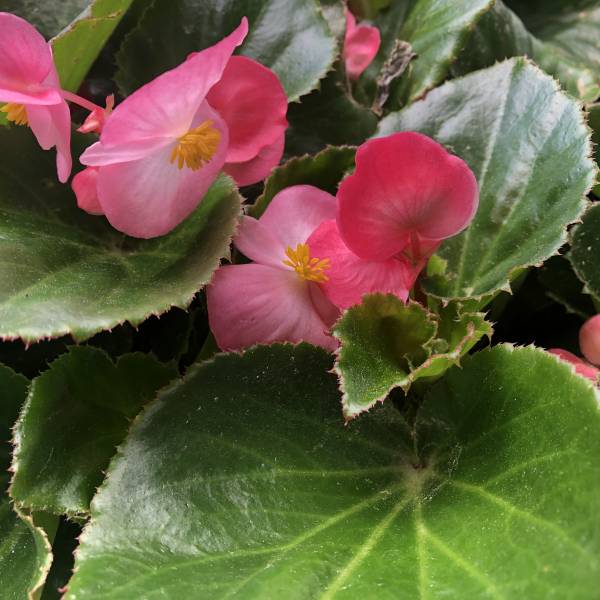Known as the “Showboat” of houseplants by the American Begonia Society, Begonia rex has recently become en-vogue for its showy foliage and eclectic forms and varieties.
Begonia rex does bear flowers, though their appearance is secondary to the forms and colors of its foliage. One of the most charming aspects of the begonia is its asymmetrical foliage, sometimes evoking similarities to the dramatic webbing of a dragon’s wing, a silver starburst, or the tight whorl of a seashell. Some are near black with fine hairs and a fringe of spikes at the leaf margin, others are cheerily speckled with white dots on iridescent green and pink leaves. The range of foliage shapes and patterns is endless. Colors range from midnight black, to green, to dusty gold, violet, grey, silver, pink, red, and teal.
These humidity-loving beauties originate from the shady understory of tropical forests, and were first studied by European botanists in the mid 17th century. Begonia rex was introduced to England entirely by accident in 1856, when a few straggling stowaway plants with interesting leaves turned up in the soil of an orchid shipment from India. Soon enough, Victorian horticulturalists took note and began cataloguing, collecting, and breeding new specimens.
Since Begonias are tropical plants, they thrive best in high humidity. This can be a little tricky in modern homes, but setting their pot in a dish of pebbles and water can alleviate some of the aridity. You can also invest in a humidifier, which is helpful for the humans in your home as well!
They do not, however, tolerate soggy soil, and should be watered sparingly. Check their pot with your finger every few days, making sure that the dirt is moist, and water just as it begins to dry out. You’ll have to pay attention to them a bit, but it’s worthwhile.
Begonias prefer bright but diffused light. Place them near a sunny window, but don’t allow them to sit in bright midday light, which will scorch their leaves. Pick a shelf or sill with soft morning light, or tuck them beneath the canopy of a larger houseplant so they receive dappled sun.
A little bit of grooming goes a long way with Begonia rex. Remove the small flower buds as they start to emerge so that the plant can concentrate its energy on the foliage. Trim away any shriveled or diseased foliage as it appears. Feed your plant after grooming with a diluted houseplant fertilizer or special begonia fertilizer, so that the plant has nutrients to put on new leaves.
Fall in Love With Begonias
Hopkinton – Saturday February 13 11AM FREE
Presented by Sharon Rosenzweig,
President of the Buxton Branch of the American Begonia Society.
Register online or call 508-293-8091








